By Herb Uhl
Right now in 2015 there are basically two kinds of motorcycles:
1) Those most people can ride and stop with both feet flat on the ground.
2) Those that sit so tall most people can’t touch the ground unless they slide most of the way off the seat and touch one toe to the ground.
The reason for such a ridiculous situation is that the design of motorcycle suspension took a wrong turn. Every time some designer tries to correct the mistake it looks enough different that it bothers someone’s sense of what a motorcycle should look like.
Let’s face it – the almost universal telescopic fork just plain looks cool. The drawback is that a telescopic fork requires way to much travel to get the compliance needed to keep a motorcycle stable over rough and uneven terrain. Of course on a cruiser or some other bike built for use on smooth highways, where you can get by with 3 to 5 inches of travel, the telescopic fork is no big problem, it’s only a safety and comfort issue.
No real adventure bike has been built for the short statured people
Right now there isn’t even one adventure bike, real enduro bike or motocross bike a person 4’6” to 5’6” tall can touch the ground flat footed on. These people have an inseam length that averages about 26″ to 29″, effectively eliminating them as customers for today’s all purpose motorcycles. That equals roughly 60% of the world’s population who can’t really enjoy a good trail or off highway motorcycle ride. Besides spoiling the fun for a heck of a lot of potential enthusiasts, that business model really sucks. The current premium rough country motorcycles are not available to 60% of the potential customers!
It’s as if the motorcycle manufacturers don’t believe a person of short stature could even want a premium quality off highway motorcycle. The motorcycle experts who write for the bike magazines often wonder in their articles why so many cruiser bikes are sold rather than higher quality sport or adventure bike models at about the same price point. We must remember that most of those experts are over 6 ft. tall and besides that, they are “enthusiasts” who would climb a ladder to get on a bike if necessary just to get another ride. They just don’t get it that most people will not buy if they can’t comfortably touch the ground.
So what can be done about it?
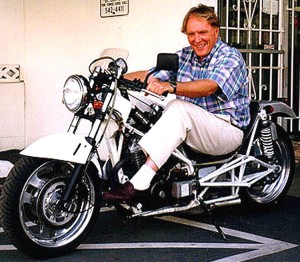 Dan Gurney figured out how to do it with the current suspension technology by putting the seat down between the engine and the rear wheel. I’ve also experimented along those lines but it’s not the real answer because you end up with a long wheelbase – that can be unwieldy in the rough.
Dan Gurney figured out how to do it with the current suspension technology by putting the seat down between the engine and the rear wheel. I’ve also experimented along those lines but it’s not the real answer because you end up with a long wheelbase – that can be unwieldy in the rough.
What is the situation?
To cure the problem we need to go back to where motorcycle suspension designers took a wrong turn. To that end we can redevelop suspension we bypassed at the time because we lacked the proper materials and technology to perfect them.
What we need to do
The most viable among them all is the leading swing arm front fork. The first multi-cylinder motorcycle was designed and built in 1895 by Felix Millet and it had swing-arm suspension front and rear. A design so far ahead of its time that even swing-arm rear suspension didn’t become universal till over 50 years later.
Swing arm front suspensions are still not in general use even though they’ve been used in one form or another by most of the manufacturers. The largest selling motor vehicle ever made, the Honda Cub, used both a leading swing arm front suspension and a trailing swing arm rear suspension similar to Millet’s bike (Over 50 million Honda Cubs sold by 2006).
The absolute best handling highway motorcycle I ever owned was a 1929 Indian model 101 Scout. It had a form of trailing arm front suspension. Even then Indian understood that for superb handling you need to have a low center of gravity and be able to put your feet flat on ground. I recently sat on a 2015 Indian Scout and they still understand it. Prior to my Scout I’d had a 1929 Harley model J.D. it was so tall I couldn’t start the engine or stop for a red light unless I was next to a tall curb. They later figured it out and their success is largely because of their sensible seat height leading to the formation of the huge Harley family. In the early days H.D. used a form of leading arm front suspension. Even today many rides still prefer that springer front fork.
Your suspension will take you over larger obstacles
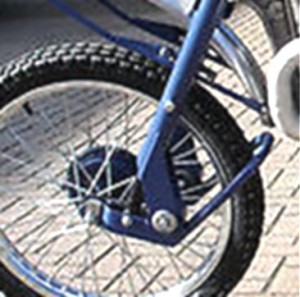
Over the years I’ve used a lot of different leading arm front suspensions on my off-highway competition bikes because I could hit bigger obstacles without crashing even though they only averaged about seven inches of travel. To get that same level of off road safety and comfort it seems to take twelve to fourteen inches of travel with a telescopic fork. The leading arm forks I’ve used have been from B.M.W., Maico, Greeves, Dot, Sachs and Honda. I imported a couple of RC-70 Honda off road bikes from Honda Japan in early 1959 and they had excellent leading arm forks. The Greeves, Sachs and Honda were the best because the weight of the suspension components was more centered. If the weight hangs out too much in front or behind the uprights it has sort of a pendulum effect as you steer requiring more effort to maintain your chosen line of travel.
Back when I was racing cross-country events I rode a 305cc Honda Super Hawk fitted with a Greeves Fork. In a major Northwest U.S. 100 mile desert race with approximately 200 riders I finished 2nd overall regardless of engine size getting a 1st in the 500cc class and only 3 min behind the winning open class rider. The superior safety and comfort of the Greeves leading arm fork had a lot more to do with that class win than my skill level.
I let a customer try my bike out on the highway in front of the store one day and he came back with the front wheel rim bent in so far we could see the inner tube showing on each side of the tire. Some construction guy had lost a piece of square cut 4×4 lumber off his truck. The rider had hit it at 60 to 70 miles per hour and not only didn’t crash but was really surprised when he saw the wheel rim. He said the bump didn’t feel that bad.
What’s the best leading arm fork?
Probably the best of the leading arm forks I’ve ridden so far is the one built by Sachs and used on their 6 day enduro competition bikes from about 1964 through 1974. In September 1969 my son Bill and I got a Sachs factory ride to compete in the 44th running of the International Six Day Enduro. It was held that year in the Bavarian Alps at the site of the 1936 winter Olympics. We were the first father and son team to ever compete in the event. 1969 was the year I’d turned 40 and Bill was 19. Bill got 1 of only 2 American gold medals that year and I got a silver medal because I was 12 minutes too slow to get a gold over the 6 days. On day three a car backed out in front of Bill and bent his front fork. With a telescopic fork he’d have been out of the race instead of finishing with a gold medal. That superior front suspension also helped secure me a much better finishing position than most older riders manage.
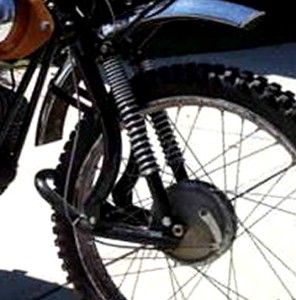
The Sachs leading arm front fork was constructed out of heavy mild steel tubing with ordinary coil over shock spring units to control the bumps. If that simple design were built from titanium tubing for strength and light weight and modern computer controlled shocks that adjust themselves many times per second there should be way more plushness, control and safety out of that seven inches of travel than they get out of the best 12 to 14 inch travel telescopic forks. Then all of us could touch the ground when we get in a tight spot or want to stop the bike.
Of course top quality materials cost more. With the current level of suspension technology it doesn’t matter how much you spend you can’t buy a plush suspension and a low seat height for off highway use.
The manufacturers seem to forget that the 6’2” guy that just bought their latest premium adventure bike probably has a 5’2” wife who has the exact same credit rating and would probably buy also if there was a premium quality small adventure bike built to fit her.
Pricing? There’s no reason a small person’s premium bike should sell for less than a large persons (size versus pricing has never been a problem for fine watches).
No one has ever built a quality small persons bike. So far if a bike is built to fit a small person almost every part of it is sub-standard. As if small persons don’t appreciate quality!
The Gear Spread
The next thing we need to address is how much engine do we need to haul that short person down the freeway at a 70 to 80 MPH cruising speed. They will probably average somewhere between 100 to 180 lbs. and being smaller there will be less wind drag. A modern 350cc to 450cc should easily do the job, if we have at least a 3.5 spread in a six-speed gearbox. To do the job properly we also need a high or low range lever so we can have a lower 6 speeds to crawl around in the forests and deserts and move the lever back for a high speed cruise when we come to a highway just like in a jeep so you can go most anywhere in the world with ease. The technology has already been worked out and used on several models. It simply needs to be scaled up.
Properly done with quality materials the machine we’re talking about should weigh in at 250 to 280 lbs. fully equipped and fueled ready to ride most any place for almost any adventure. A bike like this should get 70 to 80 M.P.G. economy on the highway. Good mileage, not because of fuel expense, but because it can be a long way between fuel stops in out of the way places.
Now the question is who’s going to build it?
They will be tapping into a whole new motorcycle market that’s never even been touched. For whoever does it it’ll be almost like when Honda came to America. They found a whole new market here that was several times bigger than the entrenched manufacturers knew from experience was the maximum.
Will it be Honda, Yamaha, Kawasaki, KTM, BMW or will it be a new player we’ve never even heard of before.
One thing for sure the demand has been there for over 50 years and no one has satisfied it. If done properly who ever builds it will be the new big dog on the block.
Remember approximately 60% of the population has never even had the chance to purchase a premium quality motorcycle that fits them.
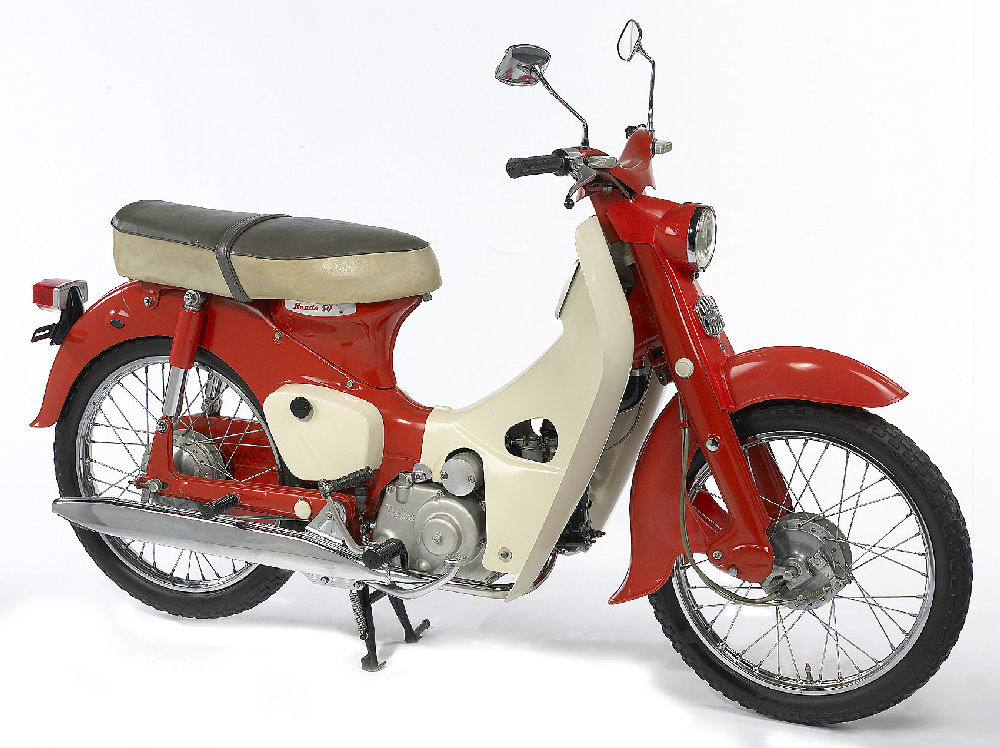
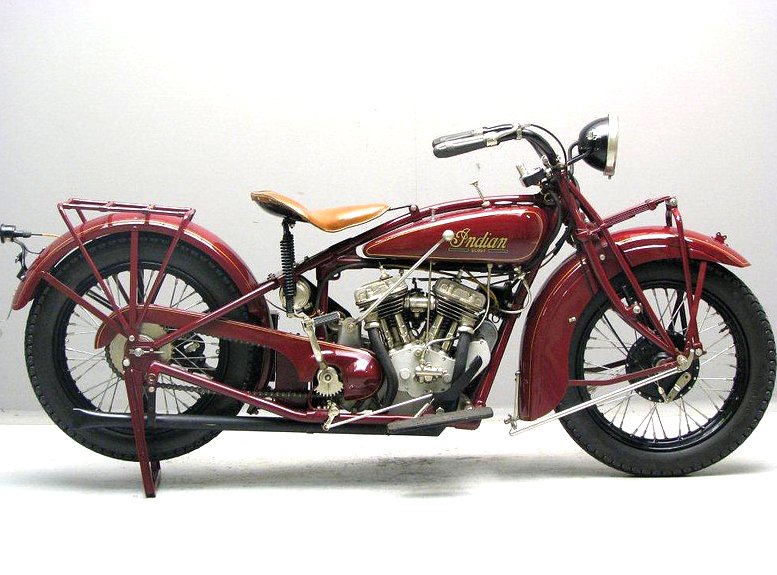
Very well stated need and objective for an improved motorcycle design.